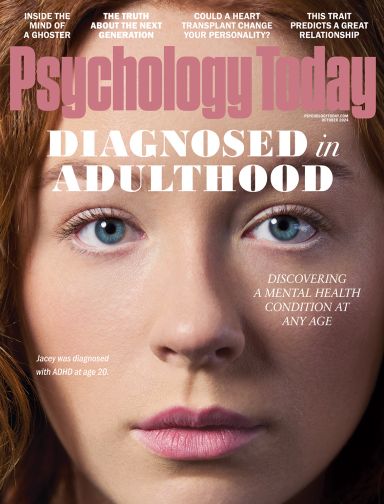Fear
Should You Walk Your Dog Twice a Day?
Dogs who get more walks are less fearful, science shows.
Posted August 21, 2020 Reviewed by Gary Drevitch

German dog owners will soon be required by law to exercise their dog twice a day for a total of at least an hour, according to news reports. While the new law is more likely to be enforced for kennels rather than private individuals, should dog owners in other countries use it as a guideline?
Most dogs would love to be taken for more walks. Some dog owners rarely, if ever, take their dog for a walk, assuming the dog will be happy with time spent in the yard, while others ensure their dog gets regular off-leash hikes. Small dogs, in particular, often miss out, being taken for fewer walks than big dogs (Arhant, et al 2010).
Walks are good for dogs. I devote a chapter of my book, Wag: The Science of Making Your Dog Happy, to dog walks simply because the research shows they are good for dogs. In one study, Labrador Retrievers that got less exercise were more likely to have behavior problems such as barking, excitability, and fear compared to Labs who got more exercise every day (Lofgren, et al 2014).
You may be thinking that Labs in particular need a lot of activities, and certainly it’s true that some dogs need more exercise than others. But new research from Finland shows the importance of exercise for all dogs (Hakanen et al 2020). This very large study looked at non-social fears such as fear of objects, surfaces (like hardwood floors), heights, and noises such as fireworks and thunder. Dogs who took part in more activities with their owner (including walking) and who received more training from their owners had the lowest levels of non-social fears.
This builds on other research from the Finnish team (Puurunen et al 2020) which found that inadequate socialization as puppies and lack of exercise were associated with social fears, i.e. fear of unknown people and dogs. Prof. Hannes Lohi of the Faculty of Veterinary Medicine and Faculty of Medicine at the University of Helsinki told Science Daily, “Diverse socialization in puppyhood and an active lifestyle can significantly reduce social and non-social fearfulness."
This could be because exercise helps with stress levels, because the dog learns coping skills on walks, and/or because joint activities help to build a better relationship between the dog and their owner, hence helping the owner’s presence be more reassuring (a ‘safe haven’ effect). Exercise is also important for dogs’ weight management, of course. More research on the benefits of exercise for dogs would be welcome. While there are no specific guidelines for how much exercise particular breeds or types of mixed-breeds need, the German law does give some general guidance that anyone can use: two walks a day making at least an hour in total. (If you have a border collie or similar breed, they may well need more.)
There are times when it is not appropriate to take dogs for long walks, such as when they are recovering from surgery, suffering from some medical conditions, or simply too old and infirm to enjoy it, or when extremes of weather make it unsafe. In those circumstances, you can find other activities to do with your dog, such as taking them for a sniffari and letting them sniff to their heart’s content food toys or snuffle mats, swimming, or other activities that your dog will enjoy.
There are also people who struggle to walk their dog because they pull or are reactive. For pulling, a no-pull harness can help a lot, while positive reinforcement can be used to train the dog to walk nicely on leash. Having a reactive dog can feel emotionally very difficult (Williams and Blackwelll, 2019), and people with such dogs may end up walking in the very early morning or late at night to try and avoid other people. But again training can make a big difference. (See the CARE for reactive dogs website for some tips and/or hire a good dog trainer to help.)
The proposed German law also makes other changes to improve dogs’ welfare. It will not be allowed to leave dogs home alone all day, which is good because they need bathroom breaks and company. For those who work full time, perhaps friends and family, dog walkers, and doggy daycares will be the solution if they can’t take their dog to work. The tethering or chaining of dogs for any great length of time will also be banned.
The new law restricts the number of litters breeders can have and also requires that they spend at least four hours with them, to ensure some socialization. Puppy mills are a big problem in North America, and we know that those early weeks of a puppy’s life are an essential time for behavioral development. (See my post, Why it’s buyer beware when it comes to puppies.) These are laws that are backed by science.
Germany’s agriculture minister, Julia Klöckner, said, “Dogs are not cuddly toys. They also have their own needs, which need to be taken into account.”
Providing dogs with what they need makes them happier. The science shows that taking your dog for walks is good for them, both in terms of their behavior and physical exercise. If you want to add more walks to your dog’s life, you’ve got a sure-fire motivator in the look on your dog’s face when it’s time for walkies.
Facebook image: Mariia Masich/Shutterstock
References
Arhant, C., Bubbna-Lititz, H., Bartels, A., Futschik, A., & Troxler, J. (2010). Behaviour of smaller and larger dogs: Effects of training methods, inconsistency of owner behaviour and level of engagement in activities with the dog Applied Animal Behaviour Science (123), 131-142
Hakanen, E., Mikkola, S., Salonen, M., Puurunen, J., Sulkama, S., Araujo, C., & Lohi, H. (2020). Active and social life is associated with lower non-social fearfulness in pet dogs. Scientific Reports, 10(1), 1-13
Lofgren, S. E., Wiener, P., Blott, S. C., Sanchez-Molano, E., Woolliams, J. A., Clements, D. N., & Haskell, M. J. (2014). Management and personality in Labrador Retriever dogs. Applied Animal Behaviour Science, 156, 44-53.
Puurunen, J., Hakanen, E., Salonen, M. K., Mikkola, S., Sulkama, S., Araujo, C., & Lohi, H. (2020). Inadequate socialisation, inactivity, and urban living environment are associated with social fearfulness in pet dogs. Scientific Reports, 10(1), 1-10.
Todd, Z. (2020) Wag: The Science of Making Your Dog Happy. Greystone Books.
Williams, E. J., & Blackwell, E. (2019). Managing the Risk of Aggressive Dog Behavior: Investigating the Influence of Owner Threat and Efficacy Perceptions. Risk Analysis.




